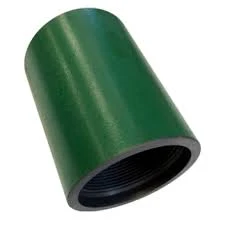- Afrikaans
- Albanian
- Amharic
- Arabic
- Armenian
- Azerbaijani
- Basque
- Belarusian
- Bengali
- Bosnian
- Bulgarian
- Catalan
- Cebuano
- Corsican
- Croatian
- Czech
- Danish
- Dutch
- English
- Esperanto
- Estonian
- Finnish
- French
- Frisian
- Galician
- Georgian
- German
- Greek
- Gujarati
- Haitian Creole
- hausa
- hawaiian
- Hebrew
- Hindi
- Miao
- Hungarian
- Icelandic
- igbo
- Indonesian
- irish
- Italian
- Japanese
- Javanese
- Kannada
- kazakh
- Khmer
- Rwandese
- Korean
- Kurdish
- Kyrgyz
- Lao
- Latin
- Latvian
- Lithuanian
- Luxembourgish
- Macedonian
- Malgashi
- Malay
- Malayalam
- Maltese
- Maori
- Marathi
- Mongolian
- Myanmar
- Nepali
- Norwegian
- Norwegian
- Occitan
- Pashto
- Persian
- Polish
- Portuguese
- Punjabi
- Romanian
- Russian
- Samoan
- Scottish Gaelic
- Serbian
- Sesotho
- Shona
- Sindhi
- Sinhala
- Slovak
- Slovenian
- Somali
- Spanish
- Sundanese
- Swahili
- Swedish
- Tagalog
- Tajik
- Tamil
- Tatar
- Telugu
- Thai
- Turkish
- Turkmen
- Ukrainian
- Urdu
- Uighur
- Uzbek
- Vietnamese
- Welsh
- Bantu
- Yiddish
- Yoruba
- Zulu
Key Distinctions Between Casing and Tubing in Oil and Gas Operations
Understanding the Differences Between Casing and Tubing in Oil and Gas Operations
In the context of oil and gas exploration and production, the terms casing and tubing are fundamental. Both serve critical roles in the well-completion process, yet they fulfill different functions and have distinct characteristics. Understanding the differences between casing and tubing is essential for industry professionals, as well as for those interested in the technical aspects of petroleum engineering.
Definition and Purpose
Casing refers to the metal pipe that is installed in the wellbore after drilling to provide structural integrity. Its primary purpose is to prevent the walls of the well from collapsing, to isolate different underground formations, and to protect groundwater resources from contamination. Casing also helps to facilitate the flow of oil and gas from the reservoir to the surface while preventing fluid migration between different geological formations.
On the other hand, tubing is the pipe installed inside the casing once the well is completed. It is used to transport the produced fluid (oil, gas, or water) from the reservoir to the surface. Tubing is typically smaller in diameter than casing, and it is designed to withstand the pressure of the fluids being produced. Tubing allows for the efficient extraction of hydrocarbons, and it can also be equipped with various downhole completion tools, including pumps or packers, to optimize production.
Design and Material Differences
Casing is usually made from thicker steel to handle the extreme pressures and mechanical stresses encountered in the wellbore. The thickness and grade of casing pipe are determined by the specific conditions of the well, including depth and the geological formations it passes through. Casing is often cemented in place to reinforce the structure and create a seal that prevents fluid migration.
In contrast, tubing is designed for different mechanical requirements and is typically thinner than casing pipe. The material used for tubing must be strong enough to handle the internal pressures of the fluids being produced, yet flexible enough to accommodate thermal expansion and contraction. Tubing grades can vary based on the type of fluid being produced and the conditions in the well, with options including carbon steel and corrosion-resistant alloys.
what are the differences between casing and tubing?

Installation Process
The installation processes of casing and tubing differ as well. After drilling the well to the desired depth, casing is installed first. This involves lowering the casing string into the well, followed by cementing it into place, which helps to stabilize the well and prevent any contaminants from seeping into freshwater zones.
Once the well is completed and production ready, tubing is installed inside the casing. The tubing string is connected to the surface production facilities, allowing for the flow of hydrocarbons from the reservoir. The installation of tubing occurs after the completion of any necessary well tests and may involve the use of specialized equipment to ensure proper positioning and sealing.
Maintenance and Monitoring
Casing and tubing also play different roles in maintenance and monitoring practices within an oil and gas operation. Casing integrity is crucial for the overall safety and environmental compliance of the well. Regular monitoring involves checking for signs of corrosion, deformation, or failure, as issues with the casing can lead to blowouts or contamination of aquifers.
On the other hand, tubing is subject to wear and tear from the continuous flow of fluids and can experience issues such as leaks or blockages due to scale build-up or corrosion. Routine inspection of the tubing's condition using methods like video surveys or pressure testing ensures that it operates effectively and efficiently.
Conclusion
In summary, while both casing and tubing are essential components of oil and gas wells, they serve distinctly different functions. Casing is primarily focused on well integrity and preventative measures against fluid migration, while tubing is aimed at the efficient transport of produced fluids to the surface. Understanding the differences between these two components is vital for professionals in the oil and gas industry, as it not only impacts the efficiency of production but also the safety and environmental stewardship of operations. As technology evolves, innovations in casing and tubing materials and designs continue to enhance the effectiveness and safety of hydrocarbon extraction processes.
-
Tubing Pup Joints: Essential Components for Oil and Gas OperationsNewsJul.10,2025
-
Pup Joints: Essential Components for Reliable Drilling OperationsNewsJul.10,2025
-
Pipe Couplings: Connecting Your World EfficientlyNewsJul.10,2025
-
Mastering Oilfield Operations with Quality Tubing and CasingNewsJul.10,2025
-
High-Quality Casing Couplings for Every NeedNewsJul.10,2025
-
Boost Your Drilling Efficiency with Premium Crossover Tools & Seating NipplesNewsJul.10,2025







